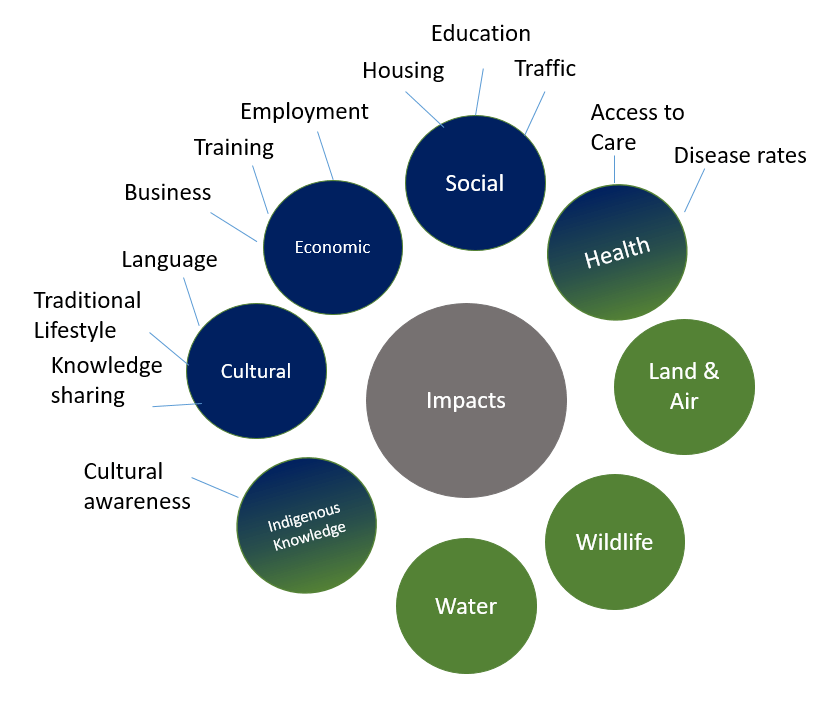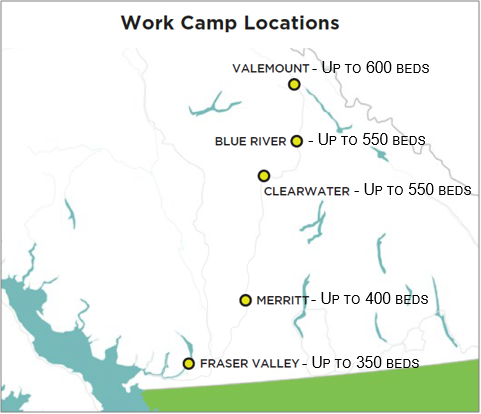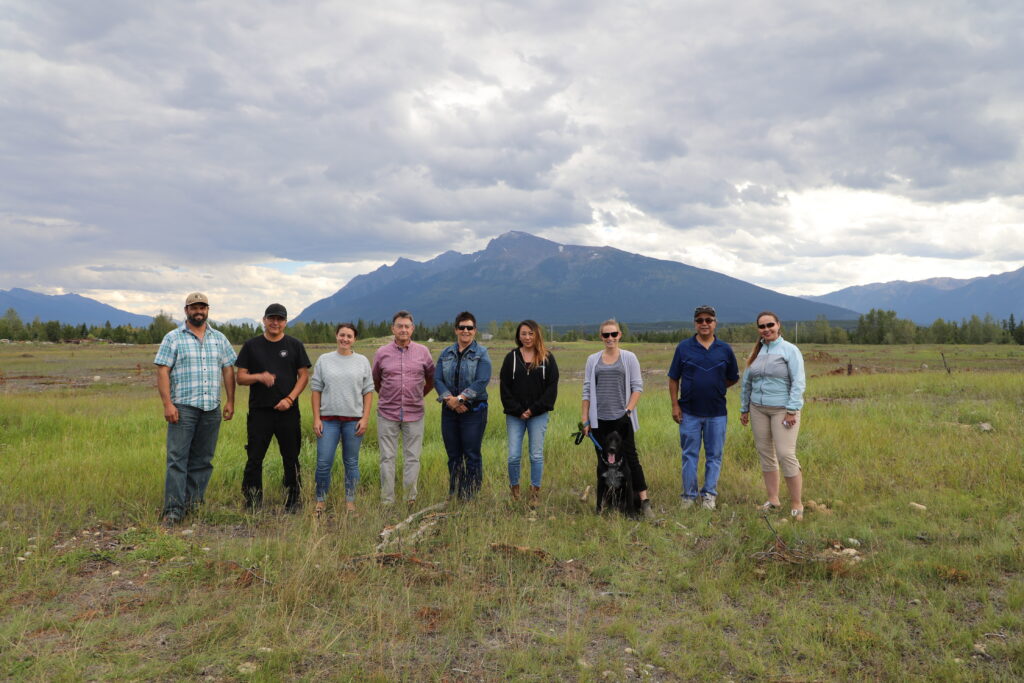Work Camps
And the Influx of Temporary Workers
Temporary work camps and influx of workers can contribute to building economic capacity in Indigenous communities through joint ventures, sub-contracts, jobs, etc. but the risk of potential negative effects also exists. This is a top concern for multiple Indigenous communities and as understood through the lived experience of Indigenous Committee members.
In early 2019, the IAMC-TMX adopted impacts of temporary work camps and influx of workers as one of its top three priorities. Since then, the Committee has been piloting new approaches to monitoring, preventing and mitigating the potential negative effects of temporary work camps and influxes of workers.

Currently, the Committee’s Temporary Work Camps and Influx of Workers Initiative (the Initiative) is broken down into four areas of work:
- Conducting research and analysis of TMC policies and regulations:
- Increasing Indigenous participation in oversight of TMC’s Socio-economic Effects Monitoring Plan (SEEMP);
- Building capacity for Indigenous communities to participate in socio-economic monitoring of temporary work camps & other influxes of works and mitigate impacts; and,
- Documenting lessons learned to develop advice to the Canadian Energy Regulator (CER).
In June 2019, the IAMC-TMX commemorated the release of the Final Report of the Inquiry on Missing and Murdered Indigenous Women and Girls (MMIWG) with a ceremony, and continues to reflect and act on the Report’s Calls for Justice for Extractive and Development Industries through the Initiative.
What is Socioeconomic Monitoring?
Most people can easily picture easily picture environmental monitoring – counting wildlife, or sampling soil or water for in socioeconomic monitoring?
There are a wide range of cultural, social, and economic factors that can be impacted by a major project. Socioeconomic monitoring defines specific indicators to collect and analyze data over time, and thresholds for when a corrective action is needed.
Industry has been doing this kind of work for the environment and health and safety for a long time, but for socioeconomics this work is relatively new.


Working with Trans Mountain Corporation and Indigenous Communities
The Socio-economic Subcommittee (SESC) of the IAMC-TMX is working with Trans Mountain Corporation (TMC) to co-develop Indigenous-focused socio-economic indicators and communication products. Shared objectives include ensuring the socio-economic monitoring framework gives TMC, the IAMC-TMX and Indigenous communities meaningful information regarding potential adverse effects for Indigenous peoples, to ensure that key mitigations are in place, and to share in a timely and meaningful way information regarding broad socio-economic aspects of the project.
The SESC is also piloting an approach with Simpcw First Nation, joint venture host of three work camps, in collaboration with TMC and the Canada Energy Regulator, to establish a community-based socio-economic effects monitoring program focused on Simcpw First Nation lands.
The subcommittee is also engaging with Indigenous communities in other regions to understand their interests in relation to temporary work camps and influxes of workers.
About TMC’s Worker Accommodation Strategy
TMC is using a mixed approach to house workers, including:
- 5 temporary full service work camps
- Hotels, motels, and bed and breakfasts
- Apartment rentals and renting rooms in private residences
- RV Parks
The full service work camps will be operated through Joint Venture partnerships with local First Nations, and will include the following amenities:
- Accommodation
- Laundry
- Dining
- Lounge
- Recreation facilities
- Health and medical services
Non-local Worker Influx by the Numbers
Spread 1 (Edmonton)
- High: 215 workers per month
- Low: 0 workers per month
Spread 2 (Stony Plain, Edson, Hinton)
- High: 695 workers per month
- Low: 16 workers per month
Hinton to Hargreaves Reactivation Segment (Jasper)
- High: 55 workers per month
- Low: 4 workers per month
Spread 3 and 4 (Valemount, Blue River, Clearwater)
- High: 1138 workers per month
- Low: 10 workers per month
- Workers primarily housed in temporary camps, but early works and some overflow will stay in commercial accommodations.
Darfield to Black Pines Reactivation Segment
- High: 30 workers per month
- Low: 0 workers per month
Spread 5A (Kamloops, Merritt)
- High: 575 workers per month
- Low: 0 workers per month
- Use of commercial accommodations in Kamloops
- In Merritt area, workers primarily housed in temporary camp, but early works and some overflow will stay in commercial accommodations
Spread 5B (Hope)
- High: 499 workers per month
- Low: 26 workers per month
- Workers primarily housed in temporary camps, but early works and some overflow will stay in commercial accommodations.
Spread 6 (Chilliwack, Abbotsford)
- High: 433 workers per month
- Low: 6 workers per month
Spread 7 (Lower Mainland)
- High: 261 workers per month
- Low: 8 workers per month



